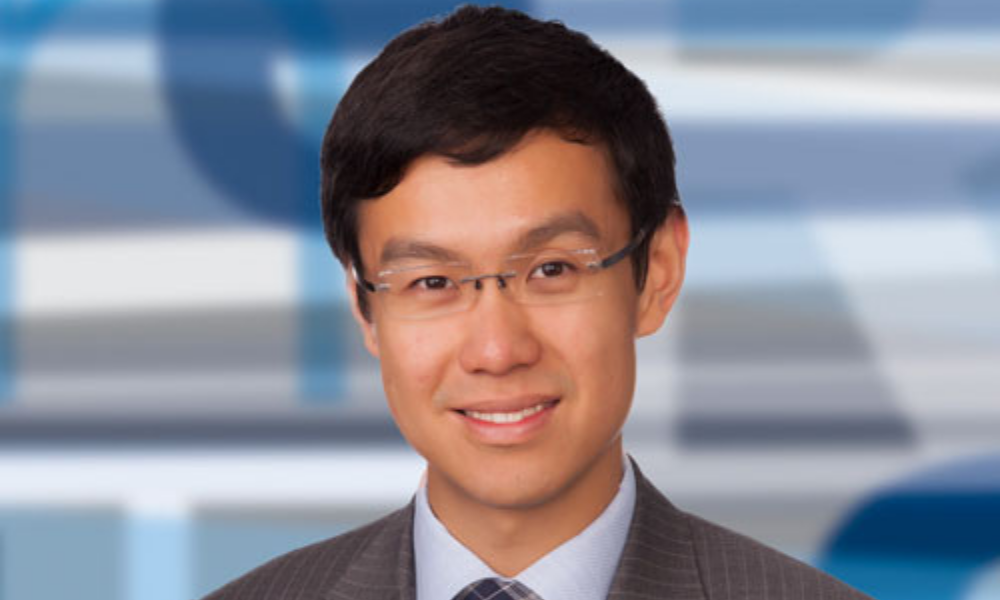The Manulife U.S. Mid-Cap Equity Fund, sub-advised by Mawer Investment Management, features independent thinkers and a bottom-up philosophy. Portfolio manager Jeff Mo explains its secret sauce

This article was produced in partnership with Manulife Investment Management.
Mawer Investment Management has a clear and strong sense of its investment philosophy – a bottom-up approach that identifies companies they believe have a distinct competitive advantage. This identity, however, is reinforced by trust in the process and its employees.
Jeff Mo, portfolio manager for the Manulife U.S. Mid-Cap Equity Fund, sub-advised by Mawer and launched in March, explains how the independently owned firm, which is distributed across more than 200 employees, has developed a flat, decentralized decision-making structure. It takes a team approach, recognizing that even the top investment stars make mistakes.
“If you have a team of independent thinkers, and we have huge diversity and independence, our decentralized structure means we have the confidence to call each other out,” he says.
Trust-building exercises are taken seriously at Mawer and ensure employees get to know each other, often through sharing sad or inspiring personal stories. “When we are in the office, our cubicles are the same size, no one has an office, and it says that we need to trust each other,” Mo adds. “We need to continue to nurture and foster that culture.
“By having a very focused investment philosophy, managed by a team that has a long-term perspective, and the ability to challenge each other, dissent and essentially come up with the best ideas, this is our secret sauce.”
The fund, which has between 35-50 names at any given time, focuses on potentially wealth-creating companies, with excellent management teams bought at a discount to their intrinsic value. These are its three investment pillars. This is underpinned by the knowledge that high profits can only be sustained if a company has a competitive advantage, whether that’s a brand, intellectual property, or massive economies of scale that prevents competitors taking market share.
“What ties all of our companies together, is the fact they have a competitive advantage,” Mo says. “You earn high returns on capital that can be sustained, and then you have more capital to reinvest over time. That's what can help create wealth for our clients.”
The U.S. Mid-Cap Equity strategy was an idea tested two years ago. The mid-cap portfolio has been honed and upgraded leading up to the launch. A common question regarding the fund’s holdings is its balance between growth and value-style exposures. Mo prefers to flip this 90 degrees to a horizontal line, representing quality. The only prediction Mawer wants to make about the future is whether a company is a wealth-creating one; everything else is about diversity and balance.
“If you think about the recent time, year to date, technology stocks have been hit because they tend to be higher duration companies as interest rates rise. But we've had some lower price industrials and financials that have done well. That diversity across growth and value allows for more resiliency. But if you pick the highest competitive advantage in growth companies and the highest competitive advantage in value companies over a five-year timeframe, we think clients are better off.”
Read more: Is a career as a portfolio manager worth it?
A bittersweet sentiment that most midcap portfolio managers face during their career is to see a holding company grow to a point where it ultimately exits the midcap investable universe. A mid cap company that Mawer believes could be in this position of becoming a “leader in a fast-growing industry” is Charles River Laboratories. Charles River is a leading provider of preclinical contract research outsourcing work for large pharmaceutical companies and smaller biotech companies. It has supported the development of more than 80 percent of the drugs approved by the U.S. Food and Drug Administration (FDA) over the past three years.1 Biotechnology Research & Development spending has increased significantly over the past 30 years2, as the cost of discovering and developing a newly approved drug is becoming increasingly expensive, and Mawer’s portfolio management team believes that Charles River could be well-positioned to benefit from that trend.
While granular research on individual companies, including calls with management, are intrinsic to Mawer’s approach, the team are aware of macro issues that could affect the portfolio, from the impact of the Ukraine-Russia conflict to inflation and interest rates. Its outlook view is that this could be a short economic cycle, especially if you mark the first quarter of 2022 as the beginning of a recovery.
Mo expects higher overnight interest rates over the next six to 12 months in most countries, including the U.S., and that should dampen economic activity, risk a slowdown, and could even lead to a recession if the Federal Reserve hikes too quickly. On the flip side, he adds, that may be healthy for the general economy if it can break the back of inflation.
“Our view is we try to be balanced,” he says. “We have some companies that will do quite well in a scenario where interest rates stay low, and the economy continues to grow, and inflation is a little bit higher. We also believe we have companies that will do well if interest rates rise quickly.
“We call these inherent contradictions – and we want to have contradictions in the portfolio. Our view is five years out and we think all those companies will have created wealth and be worth more. But the path they’ve taken might be different. Ultimately, it creates less volatility in the portfolio.”
For clients, this approach offers the potential of a smoother ride and good returns. Crucially, it’s built on Mawer’s trust in a rock-solid investment process backed up by a team willing to challenge each other’s views to achieve the best results possible.
1 https://www.criver.com/about-us
2 https://www.science.org/content/blog-post/eroom-s-law
Sponsored by Manulife Investment Management, as of May 2022.
The views expressed are those of the sub-advisor of Manulife Investment Management and are subject to change as market and other conditions warrant. Information about a portfolio's holdings, asset allocation, or country diversification is historical and is no indication of future portfolio composition, which will vary. Mutual funds are not guaranteed, their values change frequently, and past performance may not be repeated. Past performance is not indicative of further returns. Certain research and information about specific holdings in the Fund, including any opinion, is based on various sources believed to be reliable. All overviews and commentary are for information purposes only and are not intended to provide specific financial, investment, tax, legal, accounting or other advice and should not be relied upon in that regard. Please read the fund facts as well as the prospectus before investing. This material was prepared solely for informational purposes, does not constitute an offer or an invitation by or on behalf of Manulife Investment Management to any person to buy or sell any security and is no indication of trading intent in any fund or account managed by Manulife Investment Management.
Manulife Funds are managed by Manulife Investment Management Limited (formerly named Manulife Asset Management Limited). Manulife Investment Management is a trade name of Manulife Investment Management Limited.
Commissions, trailing commissions, management fees and expenses all may be associated with mutual fund investments. Please read the fund facts as well as the prospectus before investing. Mutual funds are not guaranteed, their values change frequently, and past performance may not be repeated.
Manulife, Manulife Investment Management, the Stylized M Design, and Manulife Investment Management & Stylized M Design are trademarks of The Manufacturers Life Insurance Company and are used by it, and by its affiliates under license.



